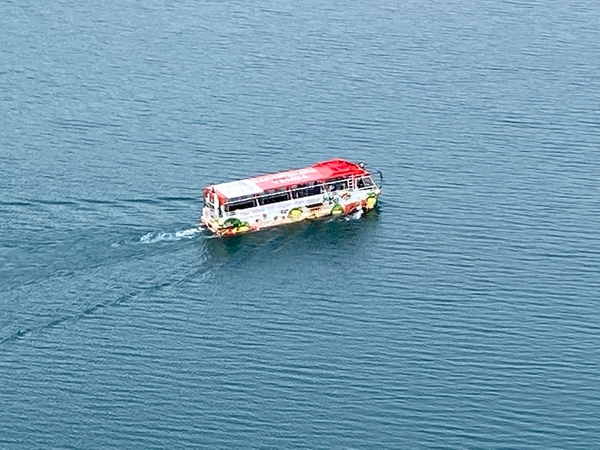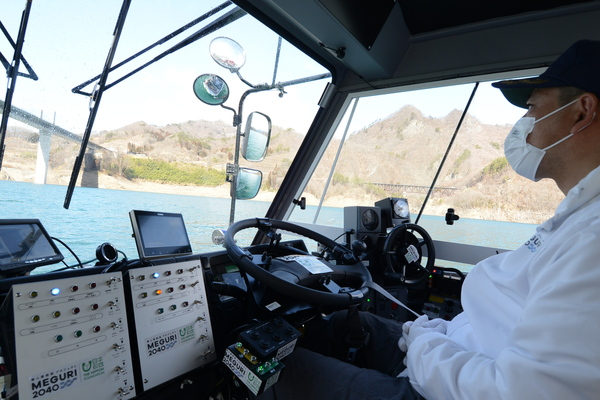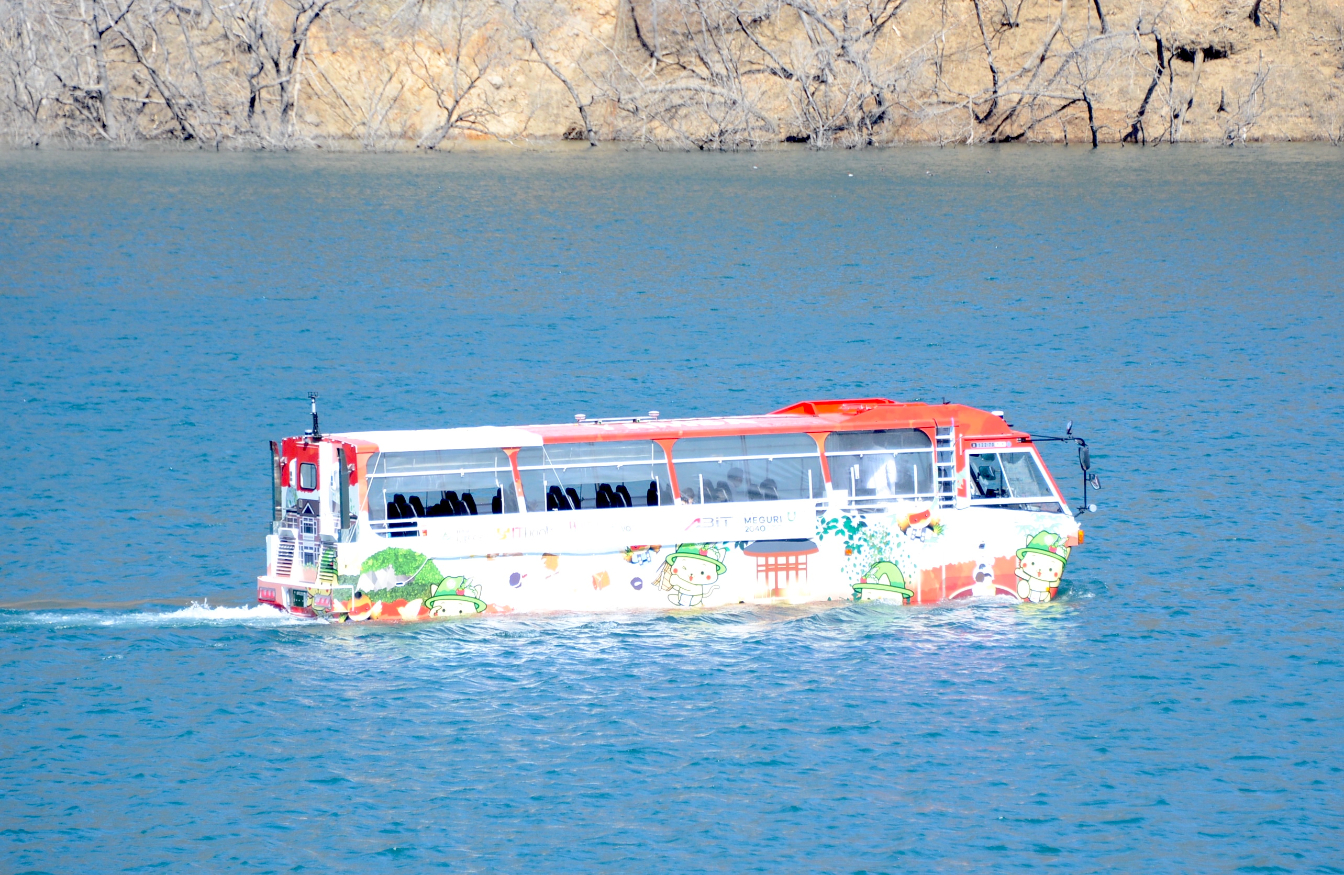J-STORIES - Japan’s domestic shipping routes are vital for goods transportation and the economy. But the industry is facing a crisis as crews grow older and too few young sailors enter the profession.
This March, a demonstration experiment took place that could offer a solution, the world’s first test of an unmanned amphibious ship. The vessel used in the test was an amphibious tourist bus that normally takes sightseers around the Yanba-Agatsuma lake in the mountains northwest of Tokyo. It was customized for remote operation using 5G wireless communications and monitoring and drive technology. It made a 2-kilometer voyage lasting 30 minutes.

The test was part of the Meguri2040 project, set up by the Nippon Foundation. It brought together ITbook, a company based in Tokyo that provided unmanned ship technology, and five companies and organizations that research autonomous drive technology, including the Saitama Institute of Technology. The joint project allowed participants to pool both funds and technology.
Naoto Nakagawa, who works in the Japan Foundation’s Ocean and Maritime Division, told J-Stories that unmanned amphibious ships could help solve the ship crew shortage by removing the need for loading and unloading goods in ports.

The MEGURI2040 project has succeeded not only in this demonstration test of an amphibious bus, but also in many other tests of unmanned vessel operation, including (1) navigation in waters with extremely heavy vessel traffic, (2) long-distance navigation over 720 km in 18 hours, and (3) navigation at a speed of 50 km/h.
Tetsuya Kikyo, who oversees the foundation’s Ocean Affairs Department, said that now the technology has been shown to work, they aim to put it to practical use by 2025.
“The project’s aim was to solve a problem in Japan,” he said, “but we hope this can lead to unmanned ships becoming common around the world and help solve issues that affect global shipping.”
Since the technology has only been tested on the placid waters of a lake formed by the Yanba dam, they plan to next develop a ship that can deal with sea waves.
Meguri2040 has also successfully conducted many tests of non-amphibious vessels, including one voyage of 720 kilometers over 18 hours in a busy shipping lane.
Translation and Editing by Tony McNicol
Top page photo by The Nippon Foundation
For inquires about this article, please contact us at jstories@pacificbridge.jp
***
***
Click here for the Japanese version of the article.

![[Podcast] Japanese technology to supercharge human fertility (Part 3)](https://storage.googleapis.com/jstories-cms.appspot.com/images/1766558713084place-for-scientific-research-2025-03-07-14-08-49-utc%20(1)_smallthumbnail.jpeg)
![[Podcast] Japanese technology to supercharge human fertility (Part 2)](https://storage.googleapis.com/jstories-cms.appspot.com/images/1765863548035unnamed-7_smallthumbnail.jpg)
![[Podcast] Japanese technology to supercharge human fertility (Part 1)](https://storage.googleapis.com/jstories-cms.appspot.com/images/1765440905082unnamed_smallthumbnail.jpg)

![[Podcast] Japanese technology to supercharge human fertility (Part 3)](https://storage.googleapis.com/jstories-cms.appspot.com/images/1766558713084place-for-scientific-research-2025-03-07-14-08-49-utc%20(1)_bigthumbnail.jpeg)
![[Interview: Part 2] A digital approach to tackle child hunger in Japan with dignity](https://storage.googleapis.com/jstories-cms.appspot.com/images/1766130666509unnamed_bigthumbnail.jpg)
![[Podcast] Japanese technology to supercharge human fertility (Part 2)](https://storage.googleapis.com/jstories-cms.appspot.com/images/1765863548035unnamed-7_bigthumbnail.jpg)
![[Podcast] Japanese technology to supercharge human fertility (Part 1)](https://storage.googleapis.com/jstories-cms.appspot.com/images/1765440905082unnamed_bigthumbnail.jpg)
_bigthumbnail.jpeg)





![[Interview] When digital and physical worlds meet](https://storage.googleapis.com/jstories-cms.appspot.com/images/1747974430456unnamed-2_smallthumbnail.png)




_smallthumbnail.jpeg)
![[Interview: Part 1] From nourishing souls to feeding the hungry](https://storage.googleapis.com/jstories-cms.appspot.com/images/1763695595492unnamed_smallthumbnail.jpg)

